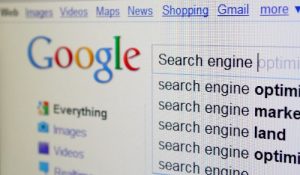
With the rapid development of Internet information technology, the Internet has been popularized in the digital age, which is rooted in human life and invariably changes people. The rise of informatization and digitalization has had an extremely far-reaching impact on economic and social development. However, structural inequalities existed in the early Internet world and continue to influence today’s digital media culture (Lusioli & Turner, 2021), including gender, race, and social class. This paper will focus on issues related to gender discrimination in the context of structural inequalities on the Internet. For the moment, the Internet does promote positive notions of gender equality by providing free channels of communication and exchange, but gender inequality discrimination still exists and has failed to reap substantial improvements.
Promotion of Gender Equality – Internet Communication
Nowadays, the widespread use of new media represented by the Internet has brought about the diversification of information, the new media can improve the perception of gender discrimination through information dissemination. It is important for economic and social development to promote females’ development and achieve gender equality (Duflo, 2012). The spread of the Internet has an impact on promoting gender equality. While changing the way people interact, the Internet also facilitates the exchange between diverse ideas, gives women powers in a patriarchal culture, which increases females’ voice and opportunities to participate in society.
1. Building an equal discourse for men and women
Tarana Burke On How The #MeToo Movement Started And Where It’s Headed. (2017, December 14). Source: YouTube. https://youtu.be/u1Rb7TGgsp4
The rise of the Internet has had a definite impact on traditional society, females can express themselves on media platforms, and reflecting on gender inequality. For example, the hashtag and mutual comments on Instagram can enhance users’ sense of community. In recent years, Internet voices against sexual assault have been quite active, such as the #MeToo movement, where more women are coming forward to disclose their victimization experiences on the Internet and gaining a lot of solidarity, that females can better speak out for equality and human rights (Mendes et al., 2018). Internet-based new media information technology has effectively reduced the cost of females’ participation in the public sphere, greatly contributed to the construction of an equal discourse between men and women, and brought unprecedented attention and focus to gender discrimination.

2. Class gap affects Internet information dissemination

The perception of gender equality is closely related to the social environment they live in. The Internet’s proliferation of information, instantaneous and interactive, allows for faster communication between multiple perspectives. However, class stratification is equally present in access online environments. In this digital divide, some remote or the homeless don’t have smartphones and receive information in a single restricted way, have only second-class access to the internet and social life (Humphry, 2020). This presents the problem of inaccessible information due to social class differences in the digital environment, which can gradually disconnect people from society. Therefore, the communication effect through the Internet can lead to exposure to the awareness of gender equality in the existing society, economy, and culture. But there is also a need to consider the class gap in the digital age.
Gender discrimination on the Internet persists and exacerbates
With the development of the digital social environment, the Internet, social media can enhance the communication between different groups of people. It cannot be denied that more and more people in modern society are working to achieve gender equality. But in cyberspace where the regulatory system is not yet perfect, the phenomenon of gender discrimination still persists. According to Lusioli and Turner (2021), the early days of the Internet were characterized by a predominantly white, male, and middle-class culture. This aspect of sexism continues to have continuity in contemporary digital culture.
1. Search Engine

Brenda (1995) argues that there are gender differences in the use of cyberspace supported by new technologies. For instance, search engines are stereotyped and biased against gender. Noble (2018) points out that search engines are biased and stereotyped against Asian girls, black girls, white girls, etc., revealing the tendency for females’ identities and images to be commercialized and marginalized in search engines. When searching for “women can not” in Google, the following will recommend that “women can not go to school” and “women can not be trusted”. This type of bias does not come from unique algorithmic forces, much of it from issues that are inherent in society and culture, it has given a high level of social visibility in search engines (Gillespie, 2017). Because Google recommends default associated terms, it automatically identifies information that is searched for more often by users for a recommendation without judging whether this information is discriminatory. Moreover, google’s ability to prioritize search results based on the subject matter as a popular contemporary search enterprise hints at Google’s market-based nature. Sometimes to promote commercial interests will prioritize the display of biased sexual orientation search results, and content from online platforms with large audiences will be rapidly spread, thus exacerbating the spread of sexism. Due to the rapid spread of the Internet, the government cannot personally review all of it, so self-regulation by online platforms is required. However, market-oriented platforms can become relaxed in regulating content under the influence of commercial interests.
2. Artificial Intelligence

The United Nations Educational, Scientific and Cultural Organization (2019) released I’d blush if I could, which examines sexism in artificial intelligence applications. In most AI voice assistants, they are almost always set up as docile and pleasing female figures, inherently embedded with a male-centric ideology. For example, Apple’s voice assistant Siri. When a user says, “Hey Siri, you’re a bitch,” Siri’s common response is “I’d blush if I could.” Most AI voice assistants project as young women, that can reflect female has been eroticized and objectify on the Internet, cause perpetuating harmful gender biases.
3. Gender inequality in the genes of the Internet technology

Gender discrimination on the Internet is also influenced by the technology of the web. Not only is there a bias in the design of technology, but also reflects some of the discrimination and inequality that exists in real-life societies and cultures. For example, in 2014, Amazon developed an AI tool for screening resumes that preferred to hire men, downgrading all resumes with female terms (Dastin, 2018). The reality is that in the Internet ecosystem, which includes technicians, engineers, and creatives (Internet Society, 2014), females have a low percentage in the distribution of these digital skills positions, exacerbating existing gender inequalities and technology becoming progressively synonymous with masculinity. Keyes (2018) states that discriminatory algorithms illustrate the lack of diversity among those who make them. The seemingly neutral Internet was embedded with gender-differentiated values when it began to operate, and the Internet largely favored men, thus preventing true gender equality (Bimber, 2000). Because the design of the Internet was dominated by male experts, male mindsets and values influenced communication through the technology’s algorithms, code, and software. Jansen (2002) further argues that technology is a gendered artifact and that technology discourse is male-made, so information technology is inherently masculine. Therefore, there is a gender difference in the genes of new media under such a male-dominated Internet technology.
Conclusion

Gender bias becomes one of the many digital divides. The Internet is seen as providing a relatively free discursive context in which females can better speak out for gender equality. But the idea that communication technologies provide women with power has been challenged by the people’s perception that online technologies only provide channels for females to communicate. Internet technology can help popularize the idea of female autonomy, but it does not really solve gender discrimination, because the Internet itself is shrouded in the control of commercial interests and the influence of male culture, the communication of women in the new media actually is a “utopia” for female discourse. The Internet still causes increases in gender inequality to some extent, and its development continues to be influenced by structural inequality. Gender discrimination should be given increasing attention, it is critical that technology be guided and shaped by gender-equitable values, relying on laissez-faire market rules in cyberspace to improve gender inequality is slow and it still needs government intervention.
References List
Bimber, B. (2000). Measuring the Gender Gap on the Internet. Social Science Quarterly, 81(3), pp. 868–876.
Brenda, A. S. (1995). The Internet and Gender. Canadian Dimension, 29(1).
Dastin, J. (2018). Amazon scraps secret AI recruiting tool that showed bias against women. REUTERS. Retrieved from: https://www.reuters.com/article/us-amazon-com-jobs-automation-insight-idUSKCN1MK08G
Duflo E. (2012). Women empowerment and economic development. Journal of Economic Literature, 50(4), pp. 1051-1079.
Gillespie, T. (2017). Algorithmically recognizable: Santorum’s Google problem, and Google’s Santorum problem. Information, Communication & Society, 20(1), pp. 63–80. https://doi.org/10.1080/1369118X.2016.1199721
Humphry, J. (2020) ‘“Second class” access: homelessness and the digital materialization of class’. In Polson, E., Schofield Clark, L. and Gajjala, R. (2020) Routledge Companion to Media and Class. New York: Routledge.
Internet Society (2014). Who Makes the Internet Work? The Internet Ecosystem. Retrieved from: https://www.internetsociety.org/internet/who-makes-it-work/
Jansen, S. C. (2002). Critical communication theory: Power, media, gender, and technology. Lanham: Rowman & Littlefield.
Keyes, O. (2018). The Misgendering Machines: Trans/HCI Implications of Automatic Gender Recognition. Proceedings of the ACM on Human-Computer Interaction, 2(CSCW), pp. 1–22.
Lusioli, A. & Turner, F. (2021). “It’s an Ongoing Bromance”: Counterculture and Cyberculture in Silicon Valley—An Interview with Fred Turner. Journal of Management Inquiry 30(2), pp. 235-242.
Mendes, K., Ringrose, J., & Keller, J. (2018). # MeToo and the promise and pitfalls of challenging rape culture through digital feminist activism. European Journal of Women’s Studies, 25(2), pp. 236-246.
Noble, S. U. (2018). A society, searching. In Algorithms of Oppression: How search engines reinforce racism. New York: New York University. pp. 15-63.
United Nations Educational, Scientific and Cultural Organization. (2019). I’d Blush If I Could. Retrieved from: https://en.unesco.org/Id-blush-if-I-could

This work is licensed under a Creative Commons Attribution 4.0 International License.